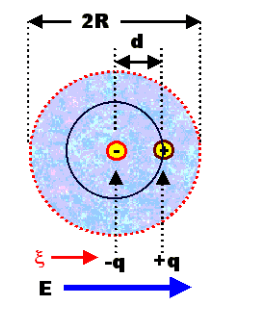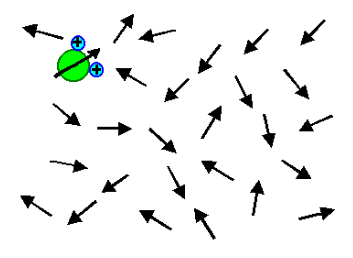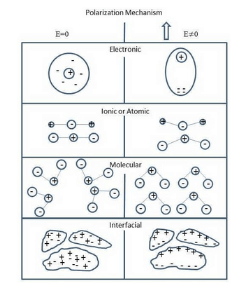Heating Element Materials: Types, Properties and Applications
A heating element is a device that converts electrical energy into heat through the process of Joule heating. When an electric current passes through a resistance, it produces heat. Heating elements are used in various heating equipment or appliances, such as electric furnaces, electric ovens, electric heaters, etc.
The performance and life of a heating element depend on the properties of the material used for it. The material should have the following:

High melting point
High resistivity
Low-temperature coefficient of resistance
High tensile strength
Sufficient ductility to form wires
High resistance to oxidation in open atmosphere
In this article, we will discuss four common materials used for manufacturing heating elements: Nichrome, Kanthal, Cupronickel, and Platinum. We will also compare their composition, properties, and applications.
What is Nichrome?
Nichrome is an alloy of nickel and chromium with small amounts of iron, manganese, and silicon. It is one of the most widely used materials for resistance wire heating elements. The typical composition of Nichrome is:
| Element | Percentage |
|---|---|
| Nickel | 80% |
| Chromium | 20% |
| Iron | 0.5% |
| Manganese | 0.5% |
| Silicon | 0.5% |
Properties of Nichrome
Nichrome has the following properties:
Resistivity: 40 µΩ-cm
Temperature coefficient of resistance: 0.0004 / °C
Melting point: 1400 °C
Specific gravity: 8.4 g/cm<sup>3</sup>
High resistance to oxidation
Applications of Nichrome
Nichrome is used for making heating elements for electric heaters and furnaces. It is suitable for continuous operation at a temperature up to 1200 °C. When the heating element is heated for the first time, chromium in the alloy reacts with oxygen in the atmosphere and forms a layer of chromium oxide on the outer surface of the heating element. This layer acts as a protective layer and prevents further oxidation, breaking, and burning out of the wire.

What is Kanthal?
Kanthal is a trademark name for a family of iron-chromium-aluminum (FeCrAl) alloys. These alloys are used for a wide range of resistance and heating applications. The typical composition of Kanthal is:
| Element | Percentage |
|---|---|
| Iron | 72% |
| Chromium | 22% |
| Aluminum | 5.8% |
Properties of Kanthal
Kanthal has the following properties:
Resistivity at 20 °C: 145 µΩ-cm
Temperature coefficient of resistance at 20 °C: 0.000001 / °C
Melting point: 1500 °C
Specific gravity: 7.1 g/cm<sup>3</sup>
High resistance to oxidation
Applications of Kanthal
Kanthal is used for making heating elements for electric heaters and furnaces. It is suitable for continuous operation at a temperature up to 1400 °C. When the heating element is heated for the first time, aluminum in the alloy reacts with oxygen in the atmosphere and forms a layer of aluminum oxide over the heating element. This layer is an electrical insulator but has good thermal conductivity. This electrically insulating layer makes the heating element shock-proof. Kanthal is very suitable for making heating elements for electric furnaces used for heat treatment in ceramics, steel, glass, and electronic industries.

What is Cupronickel?
Cupronickel is an alloy of copper and nickel, with small amounts of iron and manganese as strengthening elements. It is also known as copper-nickel or CuNi. It is used for low-temperature heating applications. The typical composition of Cupronickel is:
| Element | Percentage |
|---|---|
| Copper | 75% |
| Nickel | 23% |
| Iron | 1% |
| Manganese | 1% |
Properties of Cupronickel
Cupronickel has the following properties:
Resistivity at 20 °C: 50 µΩ-cm
Temperature coefficient of resistance at 20-500 °C: 0.00006 / °C
Melting point: 1280 °C
Specific gravity: 8.86 g/cm<sup>3</sup>
High resistance to oxidation
Applications of Cupronickel
Cupronickel is used for making heating elements for electric heaters and furnaces, especially for low-temperature applications. It is also used for making coins due to its corrosion resistance and silver-like appearance.

What is Platinum?
Platinum is a chemical element with the symbol Pt and atomic number 78. It is a noble metal that has remarkable resistance to corrosion, even at high temperatures. It is also highly ductile, malleable, mechanically strong, and stable.
Properties of Platinum
Platinum has the following properties:
Resistivity at 20 °C: 10.50 µΩ-cm
Temperature coefficient of resistance at 20 °C: 0.00393 / °C
Melting point: 1768.3 °C
Specific gravity: 21.45 g/cm<sup>3</sup>
High resistance to oxidation
High ductility
Highly malleable
Good mechanical strength
Good stability with temperature and mechanical stress
Applications of Platinum
Platinum is an incredible material with high resistivity and melting points. It is very suitable for electrical heating elements, rheostats, and resistance thermometers. However, due to its very high cost, its use in electrical engineering is limited to laboratory furnaces with a working temperature of up to 1300 °C, rheostats, and resistance thermometers.
Platinum is also a precious metal that is very popular for making jewelry.
In medicine, platinum is used in chemotherapy for the treatment of certain types of cancers.
Conclusion
In this article, we have discussed four common materials used for manufacturing heating elements: Nichrome, Kanthal, Cupronickel, and Platinum. We have compared their composition, properties, and applications.
We have learned that:
Nichrome is an alloy of nickel and chromium that has high resistance to oxidation and can operate up to 1200 °C.
Kanthal is an alloy of iron-chromium-aluminum that has high resistance to oxidation and can operate up to 1400 °C.
Cupronickel is an alloy of copper and nickel that has high resistance to oxidation and can operate up to 600 °C.
Platinum is a noble metal that has high resistivity and melting point but very high cost.
Statement: Respect the original, good articles worth sharing, if there is infringement please contact delete.
Welcome to our electricity community! Established to facilitate the exchange and cooperation in the electricity industry and bridge professionals, enthusiasts, and related enterprises.




